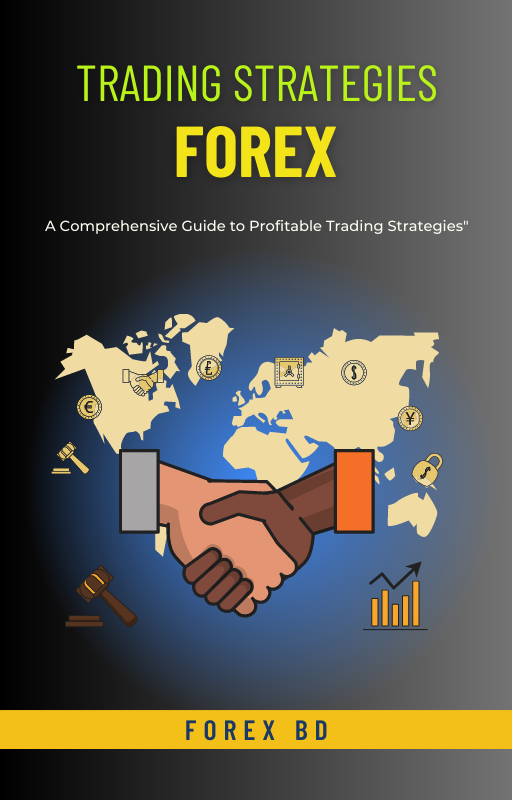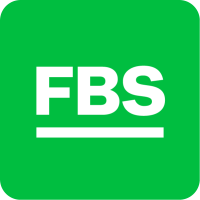
Book Title: “Forex Trading Strategies: A Comprehensive Guide for Successful Trading in 2023”
Chapter Titles:
Introduction to Forex Trading
Fundamentals of Forex Trading
Types of Forex Trading Strategies
Technical Analysis
Fundamental Analysis
Sentiment Analysis
Price Action Trading
Trend Trading
Range Trading
Breakout Trading
Scalping
Swing Trading
Position Trading
Money Management and Risk Control
Trading Psychology
The world of forex trading can be complex and challenging, but with the right strategies and knowledge, it can also be highly rewarding. The goal of this book is to provide a comprehensive guide to forex trading strategies that are effective in the year 2023. Whether you are a beginner looking to learn the basics of forex trading or an experienced trader seeking new and innovative trading strategies, this book is for you.
In this book, you will learn about the fundamentals of forex trading, the different types of forex trading strategies, and the various tools and indicators used in technical, fundamental, and sentiment analysis. You will also learn about the most popular trading strategies, including price action trading, trend trading, range trading, breakout trading, scalping, swing trading, and position trading.
Money management and risk control are crucial aspects of successful forex trading, and this book will teach you how to manage your trades and risk effectively. Finally, you will learn about the importance of trading psychology and how to develop the right mindset to succeed in forex trading.
Chapter 1: Introduction to Forex Trading
Forex, or foreign exchange, is the market where currencies are traded. It is the largest and most liquid financial market in the world, with an average daily trading volume of over $5 trillion. Forex trading involves buying one currency and selling another simultaneously, with the aim of making a profit from the fluctuations in exchange rates.
In this chapter, we will cover the basics of forex trading, including the currency pairs, the bid and ask prices, and the spread. We will also discuss the major players in the forex market, including banks, hedge funds, and retail traders.
You will learn about the advantages and disadvantages of forex trading, as well as the different types of forex brokers and trading platforms available. We will also discuss the regulatory environment of forex trading and the importance of choosing a reputable broker.
By the end of this chapter, you will have a solid understanding of what forex trading is and how it works, which will provide a strong foundation for learning about forex trading strategies in the following chapters.
Chapter 2: Fundamentals of Forex Trading
In order to successfully trade forex, it is essential to have a solid understanding of the fundamentals that drive the currency markets. In this chapter, we will cover the major economic indicators that affect currency prices, including interest rates, inflation, and GDP.
We will also discuss the role of central banks in forex trading, and how their monetary policy decisions can have a significant impact on currency prices. You will learn about the major central banks, including the US Federal Reserve, the European Central Bank, and the Bank of Japan, and how their policies can create trading opportunities.
Additionally, we will cover the impact of geopolitical events on forex trading, including elections, wars, and natural disasters. You will learn how to stay up-to-date on these events and how to adjust your trading strategy accordingly.
By the end of this chapter, you will have a thorough understanding of the fundamental factors that affect currency prices, which will be essential for developing successful forex trading strategies.
Chapter 3: Types of Forex Trading Strategies
There are numerous forex trading strategies that traders use to profit from the currency markets. In this chapter, we will cover the different types of forex trading strategies, including technical analysis, fundamental analysis, and sentiment analysis.
Technical analysis involves using charts and technical indicators to identify trends and potential trading opportunities. We will cover the most popular technical indicators, including moving averages, MACD, and RSI, and how to use them effectively.
Fundamental analysis involves analyzing economic and political factors to determine the direction of currency prices. In Chapter 2, we covered the major economic indicators that affect currency prices, and in this chapter, we will go into more detail on how to use this information to make trading decisions.
Sentiment analysis involves analyzing the mood of the market and the emotions of other traders to identify potential trading opportunities. We will discuss the most popular sentiment indicators, including the Commitment of Traders report and the VIX volatility index.
By the end of this chapter, you will have a solid understanding of the different types of forex trading strategies and the tools and indicators used in each strategy.
Chapter 4: Technical Analysis
In this chapter, we will dive deeper into technical analysis and cover the most popular technical indicators and chart patterns used in forex trading.
We will discuss how to use moving averages to identify trends and potential entry and exit points. We will also cover other popular indicators, including MACD, RSI, and Bollinger Bands, and how to use them effectively.
Additionally, we will cover chart patterns, including support and resistance levels, trend lines, and chart formations like head and shoulders and double tops and bottoms. You will learn how to use these chart patterns to identify potential trading opportunities and set stop loss and take profit levels.
By the end of this chapter, you will have a thorough understanding of technical analysis and how to use it to develop successful forex trading strategies.
Chapter 5: Fundamental Analysis
In this chapter, we will continue our discussion on fundamental analysis and cover how to use economic indicators to make trading decisions.
We will cover the major economic indicators, including interest rates, inflation, and GDP, and how to interpret them in the context of currency markets. You will learn how to use economic calendars to stay up-to-date on the latest economic releases and how to adjust your trading strategy accordingly.
We will also discuss how to analyze central bank monetary policy decisions, including interest rate announcements and quantitative easing programs. You will learn how to anticipate the impact of these decisions on currency prices and how to adjust your trading strategy accordingly.
By the end of this chapter, you will have a thorough understanding of fundamental analysis and how to use it to develop successful forex trading strategies.
Chapter 6: Sentiment Analysis
In this chapter, we will continue our discussion on sentiment analysis and
cover how to use it to identify potential trading opportunities.
We will discuss the most popular sentiment indicators, including the Commitment of Traders report, which shows the positions of large traders in the market, and the VIX volatility index, which measures the level of fear and uncertainty in the market.
You will learn how to use these indicators to identify potential trading opportunities and how to interpret the mood of the market to determine the best trading strategy.
Additionally, we will cover the impact of news and events on market sentiment and how to use this information to make trading decisions. You will learn how to stay up-to-date on the latest news and events and how to adjust your trading strategy accordingly.
By the end of this chapter, you will have a thorough understanding of sentiment analysis and how to use it to develop successful forex trading strategies.
Chapter 7: Risk Management
One of the most important aspects of successful forex trading is risk management. In this chapter, we will cover the different types of risk that traders face, including market risk, credit risk, and operational risk.
We will discuss the importance of setting stop loss and take profit levels to limit losses and maximize profits. You will learn how to calculate position sizes based on risk tolerance and account size and how to use leverage effectively to manage risk.
We will also cover the importance of diversification and how to spread risk across multiple currency pairs and trading strategies. Additionally, we will discuss the role of emotions in risk management and how to develop a disciplined trading mindset.
By the end of this chapter, you will have a solid understanding of risk management and how to use it to develop successful forex trading strategies.
Chapter 8: Developing a Trading Plan
In this chapter, we will cover the importance of developing a trading plan and how to create a plan that fits your trading style and goals.
We will discuss the different components of a trading plan, including entry and exit rules, risk management guidelines, and trading goals. You will learn how to create a trading plan that is flexible enough to adapt to changing market conditions and how to monitor and evaluate your performance.
Additionally, we will cover the importance of backtesting and forward testing your trading plan to ensure its effectiveness. You will learn how to use demo accounts to test your trading plan in a risk-free environment and how to adjust your plan based on the results.
By the end of this chapter, you will have a thorough understanding of how to develop a trading plan and how to use it to develop successful forex trading strategies.
Chapter 9: Trading Psychology
In this chapter, we will cover the role of psychology in forex trading and how to develop a disciplined and objective mindset.
We will discuss the most common psychological biases that affect traders, including fear, greed, and overconfidence, and how to overcome these biases. You will learn how to develop a trading routine that helps you stay focused and disciplined and how to use meditation and other techniques to manage stress and emotions.
Additionally, we will cover the importance of continuous learning and improvement and how to use journaling and self-reflection to evaluate your performance and identify areas for improvement.
By the end of this chapter, you will have a thorough understanding of trading psychology and how to develop a disciplined and objective mindset to support successful forex trading strategies.
Chapter 10: Putting It All Together
In this final chapter, we will bring together all the concepts and strategies covered in this book and show you how to develop a comprehensive forex trading strategy.
We will discuss how to combine technical, fundamental, and sentiment analysis to identify potential trading opportunities and how to use risk management and a trading plan to execute these trades effectively.
You will learn how to stay up-to-date on the latest news and events and how to adjust your trading strategy accordingly. Additionally, we will discuss the importance of continuous learning and improvement and how to stay
disciplined and focused on your trading goals.
We will also provide some tips and best practices for successful forex trading, including the importance of keeping a trading journal, setting realistic goals, and staying disciplined and patient.
Finally, we will address some common mistakes that traders make and how to avoid them. You will learn how to develop a healthy and sustainable trading mindset and how to maintain a long-term perspective.
By the end of this book, you will have a comprehensive understanding of forex trading strategies and how to develop and execute a successful trading plan. You will have the knowledge and skills to analyze the market, manage risk effectively, and develop a disciplined trading mindset.
Whether you are a beginner or an experienced trader, this book will provide you with the tools and strategies you need to achieve your trading goals in the challenging and exciting world of forex trading.
Name
Details
Rating
Regulation: CySEC, FCA, DFSA, FSCA, FSA, CMA
Founded: 2008
Founders: Petr Valov, Igor Lychagov
Year Founded : 2008
Deposit Methods: VISA, MasterCard, Neteller, Skrill, WM, PM, Crypto (MORE)
Leverage: 1:30 | 1:500
Regulation: CySEC, FCA, DFSA, FSCA, FSA.
Min. Deposit: 5 US$
Min. Withdraw : 5 US$
HQ: Sydney, Australia
Platforms: MT4, MT5, ctrader, web trading
Found in: January 30, 2007
Deposit Methods: Bank Wire (BankTransfer), VISA, MasterCard, Neteller, Skrill, WM, PM, Crypto
Year Founded : 2010
Cryptocurrencies:
 Yes
YesDeposit Methods: Local Deposit, Bank Wire (BankTransfer), VISA, MasterCard, Neteller, Skrill, WM, PM, Crypto, USDT
Year Founded : 2010
Cryptocurrencies: (5+) Bitcoin, Litecoin, Ethereum
Deposit Methods: Local Deposit, Bank Wire (BankTransfer), VISA, MasterCard, Neteller, Skrill, WM, PM, Crypto, USDT (MORE)
Year Founded : 2009
Cryptocurrencies:



Deposit Methods: Bank Wire (BankTransfer/SWIFT), VISA, MasterCard, Alipay, Bitcoin, Bitcoin Cash, Boleto, Ether/Ethereum, Litecoin, Local Bank Deposits, M-Pesa, Mobile Money, Monero, PerfectMoney, Ripple, WebMoney
Year Founded : 2009
Cryptocurrencies:



Deposit Methods: Local Deposit, Bank Wire (BankTransfer), VISA, MasterCard, Neteller, Skrill, WM, PM, Crypto, USDT
Year Founded : 2009
Cryptocurrencies:



Deposit Methods: Bank Wire (BankTransfer/SWIFT), VISA, MasterCard, Alipay, Bitcoin, Bitcoin Cash, Boleto, Ether/Ethereum, Litecoin, Local Bank Deposits, Mobile Money, PerfectMoney, WebMoney, USDT
Year Founded : 2011
Cryptocurrencies: (25+) Bitcoin, Litecoin, Ethereum
Deposit Methods: Bank Deposit, VISA, awepay, Bitcoin, FasaPay, Local Bank Deposits, Local Bank Transfers, Neteller, paytm, Skrill, UnionPay, USDT
Leverage: 1:20 | 1:500
Regulation: CySEC, FCA, DFSA, FSCA, FSA.
Min. Deposit: 50 US$
Min. Withdraw : 50 US$
HQ: Australia, Cyprus, and the UK.
Platforms: MT4, cTrader, web trading
EAs/Robots: ✅ Yes | News Trading: ✅ Yes | Scalping: ✅ Yes
Cryptocurrencies: 20+) Bitcoin, Litecoin, Ethereum
Deposit Methods: Local Deposit, Bank Wire (BankTransfer), VISA, MasterCard, Neteller, Skrill, Crypto. USDT
Leverage: 1:20 | 1:500
Regulation: CySEC, FCA, DFSA, FSCA, FSA.
Min. Deposit: 100 US$
Min. Withdraw : 100 US$
HQ: Cyprus, the UK, Australia, and the United States.
Platforms: MT4, cTrader, web trading
EAs/Robots: ✅ Yes | News Trading: ✅ Yes | Scalping: ✅ Yes
Cryptocurrencies: 20+) Bitcoin, Litecoin, Ethereum
Deposit Methods: Local Deposit, Bank Wire (BankTransfer), VISA, MasterCard, Neteller, Skrill, Crypto. USDT
Leverage: 1:20 | 1:500
Regulation: CySEC, FCA, DFSA, FSCA, FSA.
Min. Deposit: 50 US$
Min. Withdraw : 50 US$
HQ: Australia, Cyprus, and the UK.
Platforms: MT4, cTrader, web trading
EAs/Robots: ✅ Yes | News Trading: ✅ Yes | Scalping: ✅ Yes
Cryptocurrencies: 20+) Bitcoin, Litecoin, Ethereum
Deposit Methods: Local Deposit, Bank Wire (BankTransfer), VISA, MasterCard, Neteller, Skrill, Crypto. USDT
Year Founded : 2010
Cryptocurrencies:



Deposit Methods: Local Deposit, Bank Wire (BankTransfer), VISA, MasterCard, Neteller, Skrill, WM, PM, Crypto, USDT
A Forex broker is a financial services company that provides traders with access to the foreign exchange market. The primary function of a Forex broker is to facilitate the buying and selling of currencies by acting as an intermediary between the trader and the market ( Forex BD / BD Forex / ForexBD / ForexBDLTD / Forex bd LTD / @forexbd )..
Forex brokers offer traders a variety of services, including trading platforms, market analysis, and educational resources. They also provide access to leverage, which allows traders to control larger positions with a smaller amount of capital.
Forex brokers can operate in different ways, such as market makers, which set their own bid and ask prices and take the opposite side of their clients’ trades, or as agency brokers, which pass their clients’ orders directly to the market without any intervention.
Choosing a reliable and trustworthy Forex broker is important for traders to ensure that they receive fair and transparent pricing, access to a range of financial instruments, and adequate customer support ( Forex BD / BD Forex / ForexBD / ForexBDLTD / Forex bd LTD / @forexbd )..
Forex brokers play an important role in the foreign exchange market by providing liquidity and enabling traders to participate in the market with ease. Forex brokers offer a wide range of services and tools to traders, including:
Trading Platforms: Forex brokers provide traders with access to trading platforms that allow them to place trades, analyze the market, and manage their trading accounts.
Market Analysis: Forex brokers offer traders access to market analysis, including news, research, and economic data. This can help traders make informed decisions about when to enter or exit the market.
Educational Resources: Forex brokers often provide educational resources, such as webinars, videos, and tutorials, to help traders improve their trading skills and knowledge.
Leverage: Forex brokers offer traders access to leverage, which allows traders to control larger positions with a smaller amount of capital. However, it’s important to note that leverage can increase both potential profits and losses.
Customer Support: Forex brokers provide customer support to help traders with any questions or issues they may have ( Forex BD / BD Forex / ForexBD / ForexBDLTD / Forex bd LTD / @forexbd )..
When choosing a Forex broker, traders should consider factors such as the broker’s reputation, regulation, trading conditions, fees and commissions, and customer support. It’s important to choose a broker that is reliable, transparent, and offers competitive pricing and trading conditions.
Forex brokers provide traders with access to various types of trading platforms, each with its own unique features and advantages. Here are some of the most common types of Forex broker platforms:
MetaTrader 4 (MT4): MT4 is one of the most popular Forex trading platforms, used by millions of traders worldwide. It is known for its user-friendly interface, extensive charting tools, and support for automated trading through Expert Advisors (EAs) ( Forex BD / BD Forex / ForexBD / ForexBDLTD / Forex bd LTD / @forexbd )..
MetaTrader 5 (MT5): MT5 is the newer version of MT4 and offers additional features and improvements, such as more advanced charting tools, additional order types, and support for more financial instruments.
cTrader: cTrader is a trading platform that offers advanced charting tools, support for automated trading, and fast order execution. It is known for its user-friendly interface and customization options.
WebTrader: WebTrader is a browser-based trading platform that allows traders to access the market from any device with an internet connection. It is a popular choice for traders who prefer a simple and easy-to-use platform ( Forex BD / BD Forex / ForexBD / ForexBDLTD / Forex bd LTD / @forexbd )..
Mobile Trading Platforms: Forex brokers also offer mobile trading platforms that allow traders to access the market and manage their positions from their smartphones or tablets. These platforms typically offer a range of features, including real-time quotes, charts, and news updates.
When choosing a Forex broker platform, it’s important to consider factors such as ease of use, charting tools, order types, automated trading options, customization options, and compatibility with your trading style and strategy. Ultimately, the best platform for you will depend on your individual needs and preferences as a trader.
Forex brokers can be categorized into different types based on their business model and the services they offer to their clients. Here are some of the most common types of Forex brokers ( Forex BD / BD Forex / ForexBD / ForexBDLTD / Forex bd LTD / @forexbd ). :
Dealing Desk (DD) Brokers: Dealing Desk brokers, also known as market makers, act as counterparties to their clients’ trades. They provide liquidity to the market by taking the opposite side of their clients’ trades, and may also offer fixed spreads, guaranteed stop-loss orders, and other risk management tools.
No Dealing Desk (NDD) Brokers: No Dealing Desk brokers do not act as counterparties to their clients’ trades, but instead route their orders directly to liquidity providers, such as banks, financial institutions, and other brokers. NDD brokers typically offer variable spreads and faster order execution speeds than DD brokers.
Electronic Communication Network (ECN) Brokers: ECN brokers are similar to NDD brokers, but instead of routing orders to a single liquidity provider, they connect their clients to a network of liquidity providers, which compete to offer the best bid and ask prices. ECN brokers typically charge a commission for their services, but offer some of the tightest spreads and fastest order execution speeds in the market.
Straight Through Processing (STP) Brokers: STP brokers are similar to NDD brokers, but instead of routing orders directly to liquidity providers, they use automated systems to execute orders based on pre-defined trading rules. STP brokers may offer variable or fixed spreads, and may charge a commission or markup on their services.
Hybrid Brokers: Hybrid brokers combine elements of different business models, such as acting as both a market maker and an ECN broker, or offering both fixed and variable spreads. Hybrid brokers may offer a range of services and account types to meet the needs of different types of traders.
When choosing a Forex broker, it’s important to consider the broker’s business model and the services they offer, as well as their reputation, regulation, and customer support. The best broker for you will depend on your individual needs and trading style, as well as the trading conditions and fees offered by the broker.
Forex trading is a popular financial activity that involves buying and selling currencies to profit from the fluctuations in exchange rates. As with any financial activity, it is essential to choose a reputable and regulated broker to ensure the safety of your funds and a fair trading environment. In this article, we will discuss some of the top regulated forex broker houses.
Online forex trading payment methods refer to the various payment options available for forex traders to deposit or withdraw funds from their trading accounts. In the world of forex trading, payment methods play a vital role in facilitating smooth transactions, and it is important to choose a secure and reliable payment method that suits your needs.
Like, Share & Subscribe to Our Official Sites
Contact with Us :
Copyright © 2023 Forex BD
Risk Warning: Trading on financial markets carries risks. Contracts for Difference (‘CFDs’) are complex financial products that are traded on margin. Trading CFDs carries a high level of risk since leverage can work both to your advantage and disadvantage. As a result, CFDs may not be suitable for all investors because you may lose all your invested capital. You should not risk more than you are prepared to lose. Before deciding to trade, you need to ensure that you understand the risks involved and take into account your investment objectives and level of experience.
Disclaimer : Forexbd.ltd is not encouraging anyone to do forex/stock trading, as there are investments and financial risks involved. ForexBD channel or videos are educational and informative. Before deciding to invest in the forex market, you should carefully consider your investment objectives, level of experience, and risk appetite.
#ForexTrading #ForexMarket #ForexBroker #ForexSignals #ForexAnalysis #ForexEducation #ForexPlatform #ForexTools #ForexStrategy #ForexTradingTips #ForexInvesting #ForexNews #CurrencyTrading #OnlineTrading #TradingSoftware #TechnicalAnalysis #FundamentalAnalysis #RiskManagement #MarketResearch #TradingCommunity #ForexTradingSignals #ForexTradingSystem #ForexMarketAnalysis #ForexMarketNews #ForexMarketResearch #ForexTradingStrategies #ForexTrader #ForexTradingSoftware #ForexTradingCourse #ForexTradingForBeginners #ForexTradingPlatform #ForexTradingEducation #ForexTradingAcademy #ForexTradingOnline #ForexTradingCommunity #ForexTradingCharts #ForexTradingIndicators #ForexTradingAccount #ForexTradingCoach #ForexTradingRobot


























